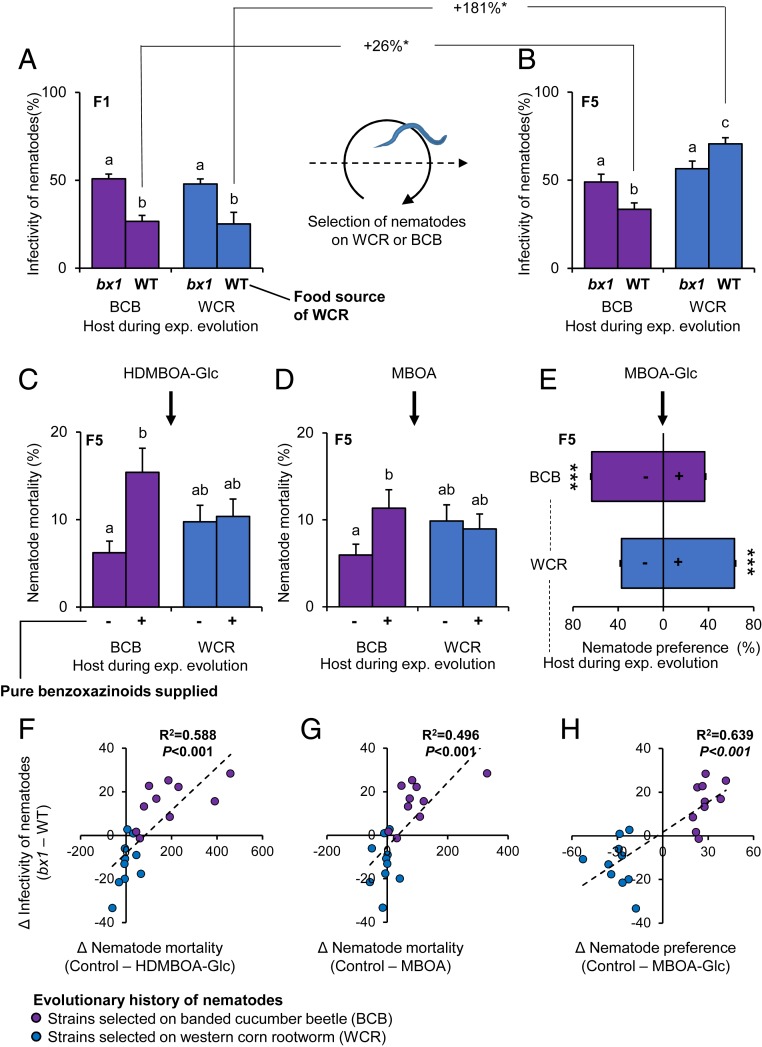Fig. 3.
Rapid evolution of benzoxazinoid resistance and infectivity in nematodes exposed to the WCR. (A) Infectivity of F1 nematodes reared on the WCR (WCR+; blue) or the BCB (purple) for 1 generation, exposed to WCR larvae fed on WT or bx1 mutant plants. Different letters indicate significant differences between treatments (false discovery rate corrected least square means, P < 0.05). (B) Infectivity of F5 nematodes reared on the WCR (WCR+; blue) or the BCB (purple) for 5 generations and exposed to WCR larvae fed on WT or bx1 mutant plants. Different letters indicate significant differences between treatments (false discovery rate corrected P < 0.05). Significant changes (*P < 0.05) in infectivity between F1 and F5 nematodes are indicated by asterisks. (C and D) Impact of physiologically relevant doses of HDMBOA-Glc (150 µg/mL) and MBOA (25 µg/mL) on nematode mortality. Different letters indicate significant differences between treatments (false discovery rate corrected P < 0.05). (E) Impact of physiological doses of MBOA-Glc (3 µg/mL) on nematode attraction. Asterisks indicate a significant effect of MBOA-Glc (P < 0.001). EMMeans and SEs derived from statistical models (Dataset S1) are shown. (F–H) Linear correlations between benzoxazinoid dependent infectivity (data from B) and in vitro benzoxazinoid resistance (data from C–E). R2 and P values of linear regressions are shown. Dashed regression lines are drawn for significant correlations.

